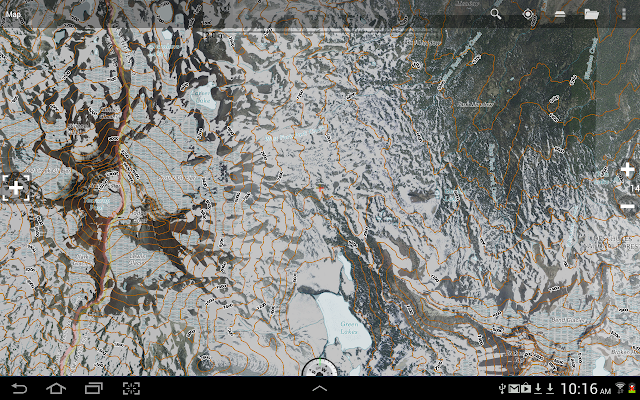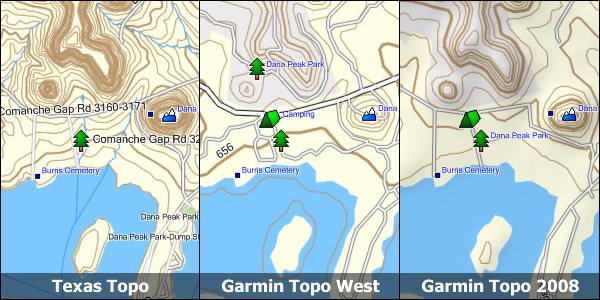
- #BACKCOUNTRY NAVIGATOR GPS FILE DEPOT PDF#
- #BACKCOUNTRY NAVIGATOR GPS FILE DEPOT INSTALL#
- #BACKCOUNTRY NAVIGATOR GPS FILE DEPOT UPDATE#
- #BACKCOUNTRY NAVIGATOR GPS FILE DEPOT PRO#
- #BACKCOUNTRY NAVIGATOR GPS FILE DEPOT OFFLINE#
I know in years past a lot of the simpler garmins came loaded with either no basemap or a 1:100k basemaps that were not very useful when trying to navigate on the ground. Don't rely on it for route-finding or use as a topo map until you determine the resolution of the basemaps are that come with it. This unit should work fine for locating and relocating points, such as where you're parked or where you stashed that 12 pack. You can set them to record tracks more frequently in tighter conditions or less frequently to conserve memory. In previous models you could have it record a track log either on a set time or distance interval. Select one of the ones you made, and tap “Choose This Trip”.The idea of inputting waypoints with UTM's should work on any garmin - you should be able to go into the settings and change the map coordinate system and map datum to numerous options.įor a track log, be sure and check the settings before you rely on it. Then you can tap “Trip Data” and “Choose Another Trip Database”.When it has finished, you will be sent back to the main map page. Having created a Trip Database, tap the START IMPORT button.If you didn’t pre-make them, choose “New Trip Database” and give it a name on the right. If you pre-made them all earlier, tape “Existing Trip Database” and select it from the drop-down list on the right. At this point you will be prompted to make a new trip database or put it in an existing one.Browse to where you put the GPX file and tap on it.Then tap Trip Data, and “Import Tracks or Waypoints”.You could skip pre-making these, and just make them one at a time while you import the files.


It’s more time spent setting it up, but it will load faster when you go to an area and want to open the tracks for that area. I suggest creating one database for each GPX file. Tap “Trip Data” and then “Create a new (empty) trip database. You can either do this by copying them to the SD card directly, or emailing them to yourself, or using something like Google Drive or Dropbox to get them there.

Don’t get sidetracked with comparing them right now, you can easily do that later. If it wants you to choose Elements vs Elevate, I like Elements better, though they are VERY similar, and you can switch back and for at any time.
#BACKCOUNTRY NAVIGATOR GPS FILE DEPOT INSTALL#
#BACKCOUNTRY NAVIGATOR GPS FILE DEPOT PRO#
I highly recommend the Pro version over the free version.
#BACKCOUNTRY NAVIGATOR GPS FILE DEPOT UPDATE#
As I become aware of changes, I will update this page.įirst, on your GPS-enabled Android device, go to the Play Store and purchase BackCountry Navigator Pro. Note: Updates to BCN may change the exact wording or locations of the menus.
#BACKCOUNTRY NAVIGATOR GPS FILE DEPOT PDF#
If you bought the PDF version of the UTV Guide, you’ll be able to load that up and take it with you as well! Once you have performed these tasks, you will be able to view good TOPO maps in BCN on your Android device, and show my GPS tracks on those maps, out on the trail without any access to cellular or WiFi service.
#BACKCOUNTRY NAVIGATOR GPS FILE DEPOT OFFLINE#
You’ll also want a basemap to provide context for the GPS lines, and it should be one that can be made available offline because there is very limited cellular service where most of these trails go. As far as I know, BCN is not available on IOS. I tested these instructions on a friend’s Samsung Galaxy S5 smartphone as well as my tablet. If your tablet or phone is running Android and has a GPS, there’s a good chance you can follow these instructions and use these files on your device. You can import these files into your GPS device or navigation app, such as Backcountry Navigator.

Along with every guide book purchase, either electronic or printed, you get a set of GPS files in the open source GPX format.


 0 kommentar(er)
0 kommentar(er)
